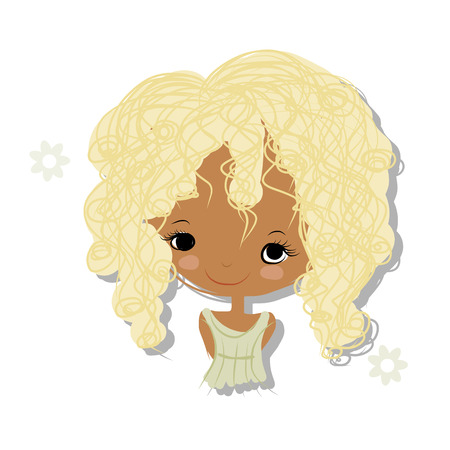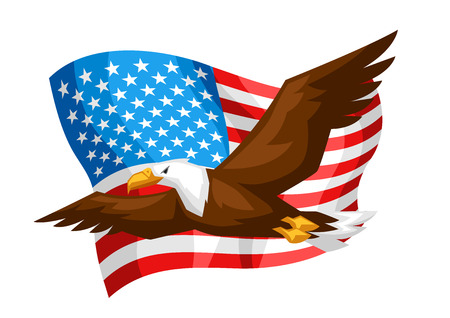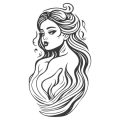1. Introduction to Hair Coloring in America
Hair coloring has become a vibrant part of American culture, visible on city streets, in schools, at workplaces, and across social media feeds. Over the past century, hair dye has moved far beyond its early days as a way to cover gray hair or fit beauty standards. Today, coloring your hair in the U.S. is widely seen as a creative act—one that allows people to express their unique personalities, beliefs, and identities.
How Common Is Hair Coloring?
It’s hard to walk down any Main Street in America without spotting someone with bold highlights, pastel streaks, or natural-looking balayage. According to industry research, nearly 75% of American women have colored their hair at least once, and more men are joining the trend every year. People from all walks of life—students, artists, professionals, parents—choose to experiment with color for many different reasons.
Evolution of Hair Coloring in American Culture
| Era | Main Trends | Cultural Meaning |
|---|---|---|
| 1920s-1950s | Subtle blondes & brunettes; hiding gray | Aim for conformity; beauty standards set by Hollywood stars |
| 1960s-1970s | Platinum blondes; “streaking”; first fantasy colors | Rebellion; counterculture movements (hippies & punks) |
| 1980s-1990s | Bold highlights; neon colors; grunge-inspired looks | Pop culture influence; individuality rising in importance |
| 2000s-present | Purple ombre, rainbow hair, natural blends (balayage) | Self-expression; inclusivity; breaking gender norms |
The Role of Hair Color in Self-Expression and Identity
Today’s hair color trends reflect the diversity and creativity found throughout the United States. Whether it’s pastel pink for Pride Month, subtle caramel highlights for a career change, or jet black as an aesthetic statement, Americans use hair dye to share parts of their personality and story with the world. For many, choosing a color is about more than just looks—it’s about feeling seen and understood.
2. Historical Context and Shifting Trends
Hair coloring in America is much more than just a beauty trend—it’s a reflection of changing cultural attitudes, social movements, and creative self-expression. From the silver screen to the concert stage, key moments in U.S. history have shaped how Americans view and use hair color as a form of identity.
The Early Days: Hollywood’s Golden Age
In the 1930s and 1940s, classic Hollywood stars like Marilyn Monroe, Lucille Ball, and Rita Hayworth set the tone for glamorous hair colors. Platinum blonde became the symbol of allure, while fiery redheads and sultry brunettes captured the public’s imagination. Hair coloring was seen as a ticket to stardom or sophistication, but it was mostly limited to movie stars or those who wanted to emulate them.
The Rise of Youth Culture: 1960s–1980s
The 1960s marked a major shift as music icons like The Beatles and Janis Joplin inspired young people to experiment with their looks. Psychedelic fashion and bold streaks reflected the era’s spirit of rebellion. In the 1970s, punk rockers like Debbie Harry and David Bowie made bright, unconventional hair colors mainstream. By the 1980s, MTV brought Madonna, Cyndi Lauper, and Prince into American homes, making creative hair color choices part of pop culture.
Key Influences by Decade
| Decade | Cultural Influence | Popular Hair Colors/Trends |
|---|---|---|
| 1930s-40s | Hollywood Glamour | Platinum blonde, deep brunette, classic red |
| 1960s | Counterculture & Rock Music | Natural shades with bold highlights, sun-kissed looks |
| 1970s-80s | Punk & Pop Icons | Neon colors, two-tone dyes, wild patterns |
| 1990s | Grunge & Hip-Hop Culture | Bleached tips, chunky highlights, vivid streaks |
| 2000s-present | Social Media & Diverse Representation | Pastels, balayage, rainbow hair, natural textures embraced |
The Influence of Social Movements and Representation
Cultural shifts around identity and representation have also played a role in hair color trends. The natural hair movement encouraged many Black Americans to celebrate their natural texture and experiment with vibrant shades that reflect pride in their heritage. LGBTQ+ communities have used bold hair colors as statements of visibility and self-acceptance. Social media platforms like Instagram and TikTok continue to push the boundaries of what’s possible—and acceptable—when it comes to hair coloring.

3. Hair Coloring and Personal Identity
Expressing Uniqueness Through Hair Color
For many Americans, hair coloring is more than just a beauty trend—its a powerful tool for self-expression. Changing hair color allows people to showcase their personality, moods, and creativity in a way that’s instantly visible. From bold blues to classic blondes, each color can send a different message about who someone is or how they want to be seen.
Exploring Gender Identity and Self-Discovery
Hair color also plays an important role in exploring and communicating gender identity. For some, choosing a new shade represents stepping into their true selves or challenging traditional gender norms. Whether it’s a transgender person dyeing their hair as part of their transition or anyone simply trying out a look outside of society’s expectations, hair coloring offers a unique form of empowerment.
Ways Americans Use Hair Coloring to Express Themselves
| Purpose | Examples |
|---|---|
| Creativity | Rainbow highlights, ombré effects, seasonal colors |
| Celebration | Dyeing hair for Pride Month, sports events, or festivals |
| Identity Exploration | Trying new styles during life changes or transitions |
Cultural Acceptance and Normalization
In the United States, seeing vibrant hair colors has become increasingly common and accepted. It’s not unusual to spot teachers with pastel pink hair or business professionals with silver streaks. This shift reflects broader cultural values around individuality and the freedom to express oneself without fear of judgment.
A Platform for Creative Expression
Salons and social media platforms have turned hair coloring into an art form. Stylists create masterpieces using advanced techniques, while people proudly share their looks online. This encourages others to experiment and embrace their own creative ideas, making hair color an exciting way to tell personal stories every day.
4. Pop Culture, Media, and Influencers
The Spotlight: Hair Coloring in American Pop Culture
Hair coloring has become a major part of American pop culture, showing up everywhere from TV shows to viral social media challenges. The way people dye their hair isn’t just about style—it’s also about making a statement or expressing individuality. Whether it’s an actor on a hit series, a singer at the Grammys, or a TikTok influencer with rainbow locks, hair color choices often set trends that millions want to follow.
Media Representation: TV, Film, and Music
TV and movies have long used hair color to help tell stories or define characters. Think of Lucille Ball’s iconic red hair in “I Love Lucy,” or how dramatic transformations in reality shows like “America’s Next Top Model” spark conversations across the country. Musicians, too, use bold colors—Billie Eilish’s green roots or Lady Gaga’s ever-changing shades—to reinforce their unique image.
| Celebrity/Character | Hair Color Trend | Cultural Impact |
|---|---|---|
| Billy Eilish | Neon Green Roots | Youth expression, alternative styles |
| Kylie Jenner | Pale Pastels & Bright Colors | Mainstream acceptance of playful colors |
| Lucille Ball (“I Love Lucy”) | Bright Red Hair | Classic TV icon, bold female representation |
| Lil Nas X | Purple & Pink Shades | LGBTQ+ visibility, breaking gender norms |
| Lizzo | Blue, Green Wigs | Body positivity, self-love movements |
Social Media and Viral Trends
Platforms like Instagram, TikTok, and YouTube have made it easier for anyone to share their hair color journey. Tutorials on DIY coloring techniques, product reviews, and transformation videos rack up millions of views. Hashtags such as #haircolor and #hairtransformation connect diverse communities who use color to celebrate heritage or creativity. Online influencers often introduce new products or styles that quickly spread across the country.
How Social Media Drives Hair Coloring Trends:
- Tutorials: Step-by-step guides make it easy for people to try new colors at home.
- Influencer Endorsements: When a famous influencer dyes their hair blue or pink, followers want to try it too.
- Challenges: Viral challenges (like the “Glow Up” trend) encourage users to show off dramatic before-and-after color changes.
- Diverse Representation: People from all backgrounds showcase how hair color can reflect identity and pride.
The Ripple Effect: Everyday Inspiration
The constant presence of bold hair colors in American pop culture and digital media means that what starts as a celebrity statement can quickly become an everyday look for teens, parents, professionals—anyone looking to express themselves. From red carpets to classrooms and offices, hair coloring has broken boundaries and become a symbol of self-expression influenced by the stars we watch and follow online.
5. Societal Attitudes and Stereotypes
Hair coloring is more than just a style statement in American society; it can shape how people are seen in different parts of life, like at work, school, and even while running errands. Our choices in hair color sometimes send messages to others—whether we mean to or not. Lets look at some of the ways hair coloring can affect perceptions and highlight where acceptance and bias still play a role.
Workplace Perceptions
In many workplaces across the U.S., there are unspoken (and sometimes written) rules about what “professional” hair should look like. For example, traditional companies may expect natural hair colors like brown, black, blonde, or subtle red. Bright colors like blue, green, or pink might be seen as unprofessional or distracting. However, creative industries such as tech startups, fashion, or arts tend to be more open to expressive hair colors.
| Industry | Common Attitude Toward Hair Coloring |
|---|---|
| Corporate/Finance | Prefers natural tones; bright colors discouraged |
| Education | Depends on the school; some conservative, some open |
| Retail/Hospitality | Often allows some creativity but may have limits |
| Creative/Tech | Usually accepting of all colors and styles |
Hair Color and Education Settings
Schools and colleges also reflect wider social attitudes about hair color. Some schools have strict dress codes that ban “unnatural” hair colors, aiming for uniformity. Others embrace individuality and allow students to express themselves through their appearance. The way a student’s hair is colored can affect how they’re treated by teachers or peers—sometimes positively as “cool” or “unique,” other times negatively as “rebellious” or “disruptive.” These experiences often shape young people’s confidence and self-expression.
Daily Life: Acceptance and Bias
Out in public, reactions to dyed hair can be mixed. People with bold hair colors may get compliments from strangers who see them as creative or brave. On the flip side, they might also face stares or judgment from those with more traditional views on appearance. Sometimes, stereotypes come into play—for instance, someone with neon green hair might be seen as rebellious or attention-seeking, even if that’s not true at all.
Stereotypes Linked to Hair Color Choices
| Hair Color Choice | Common Stereotype in Society |
|---|---|
| Naturally Colored (Brown/Black/Blonde) | “Professional,” “Conservative,” “Trustworthy” |
| Bright Unnatural Colors (Blue/Pink/Purple) | “Rebellious,” “Creative,” “Unconventional” |
| Platinum Blonde/Bleached Hair | “Trendy,” “Bold,” “High Maintenance” |
| Ombre/Rainbow Styles | “Artistic,” “Youthful,” “Attention-Seeking” |
The Changing Conversation Around Hair Color
The good news is that attitudes are slowly shifting toward greater acceptance. As conversations around diversity and self-expression grow louder in America, more people are challenging old norms and making space for everyone to show up as their authentic selves—including through their hair color choices.
6. Inclusivity, Diversity, and Social Movements
Hair Coloring and Its Place in American Identity
Hair coloring in the United States is more than just a style choice—its a form of self-expression that intersects with the countrys ongoing conversations about race, ethnicity, and identity. From bold rainbow hues to natural shades, hair color trends reflect how Americans see themselves and the diverse communities they belong to.
The Dialogue Around Race and Ethnicity
Historically, certain hair colors have been tied to specific racial or ethnic groups. For example, blonde hair was once idealized in mainstream media, while natural Black hair textures and colors were underrepresented or even stigmatized. Today, people are challenging these old standards by embracing their natural hair color or experimenting with new ones as a celebration of their cultural heritage. This shift supports broader movements for racial equality and representation.
Examples of Hair Color Trends and Cultural Impact
| Trend | Cultural Significance | Impact on Society |
|---|---|---|
| Natural Black Hair Colors & Styles | Affirmation of Black identity and pride | Increased representation in media; support for anti-discrimination laws like The CROWN Act |
| Bold Rainbow Colors | LGBTQ+ pride and self-expression | Greater visibility for queer communities; challenging norms around gender and beauty |
| Traditional Red Henna & Highlights | Cultural connection for South Asian & Middle Eastern Americans | Celebration of heritage during weddings & festivals; growing appreciation of global beauty rituals |
Navigating Cultural Appropriation vs. Appreciation
The popularity of certain hair colors can also spark debates about cultural appropriation, especially when trends originate from marginalized groups but are adopted without understanding their meaning. For example, wearing box braids or dying hair with traditional indigenous patterns can be seen as disrespectful if not done thoughtfully. Many Americans are now seeking to educate themselves about the origins of different styles and show respect when drawing inspiration from other cultures.
Diversity in Beauty Standards: Moving Forward
The movement toward inclusivity means valuing all types of hair colors and textures—not just those historically favored in mainstream culture. Social media campaigns, celebrity influence, and grassroots activism have helped push brands and salons to expand their offerings for all hair types and tones. This encourages everyone to embrace what makes them unique while appreciating the diversity that shapes American society.
7. Conclusion: Future Directions and Lasting Impact
Hair coloring has become much more than just a beauty routine in American society—it’s a powerful form of self-expression, creativity, and cultural conversation. Over the years, Americans have used hair color to show individuality, align with trends, celebrate heritage, and even challenge stereotypes.
The Enduring Influence of Hair Coloring
From the pastel waves of the 2010s to bold natural tones in recent years, hair coloring continues to reflect what matters most to people in the U.S. It’s not just about looks; it’s about identity, community, and freedom to be yourself. Hair salons have become safe spaces where people of all backgrounds can explore new sides of themselves and connect with others.
How Hair Coloring Shapes American Culture
| Era | Popular Colors/Trends | Cultural Meaning |
|---|---|---|
| 1960s-1970s | Blondes, natural highlights | Liberation, youth culture |
| 1980s-1990s | Vivid reds, punk colors | Rebellion, individuality |
| 2000s-2010s | Ombre, pastels, rainbow hues | Creativity, social media influence |
| 2020s-now | Browns, silvers, bold naturals | Diversity, authenticity |
Looking Ahead: What’s Next for Hair Coloring?
- Sustainability: As people become more eco-conscious, expect to see growth in plant-based dyes and cruelty-free products.
- Diversity & Inclusion: More brands are celebrating all hair types and shades—making everyone feel seen and valued.
- Tech Integration: Apps may help preview hair colors before dyeing or connect users with stylists who specialize in specific techniques.
- Personal Expression: The future will likely bring even more creative freedom for people to experiment and share their unique styles.
A Reflection on Cultural Significance
The journey of hair coloring in America is ongoing and always changing. It’s a mirror for our values—embracing difference, fostering creativity, and encouraging each person to write their own story. As new generations put their spin on old traditions, hair color will keep being an important part of how Americans express who they are and what they stand for.


